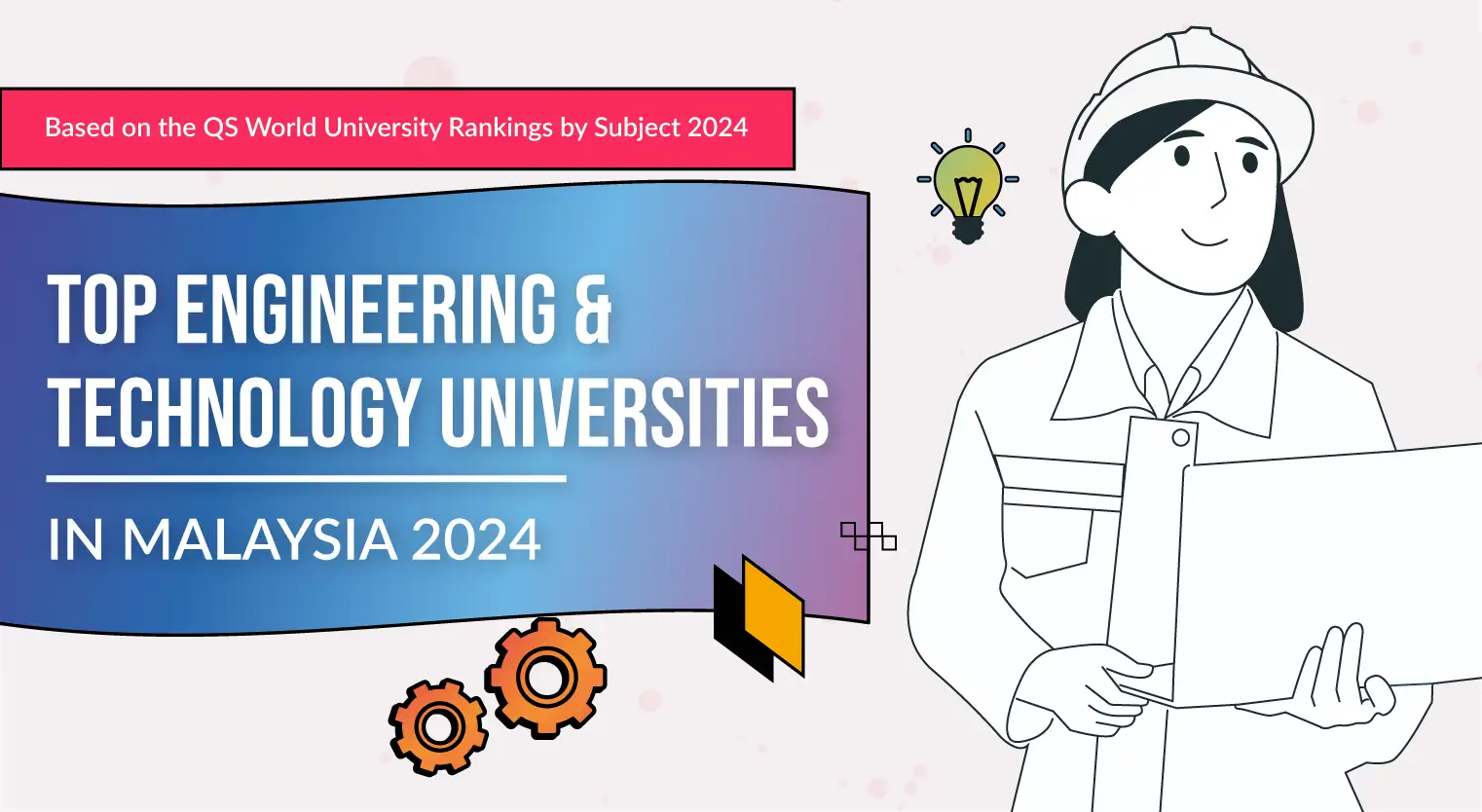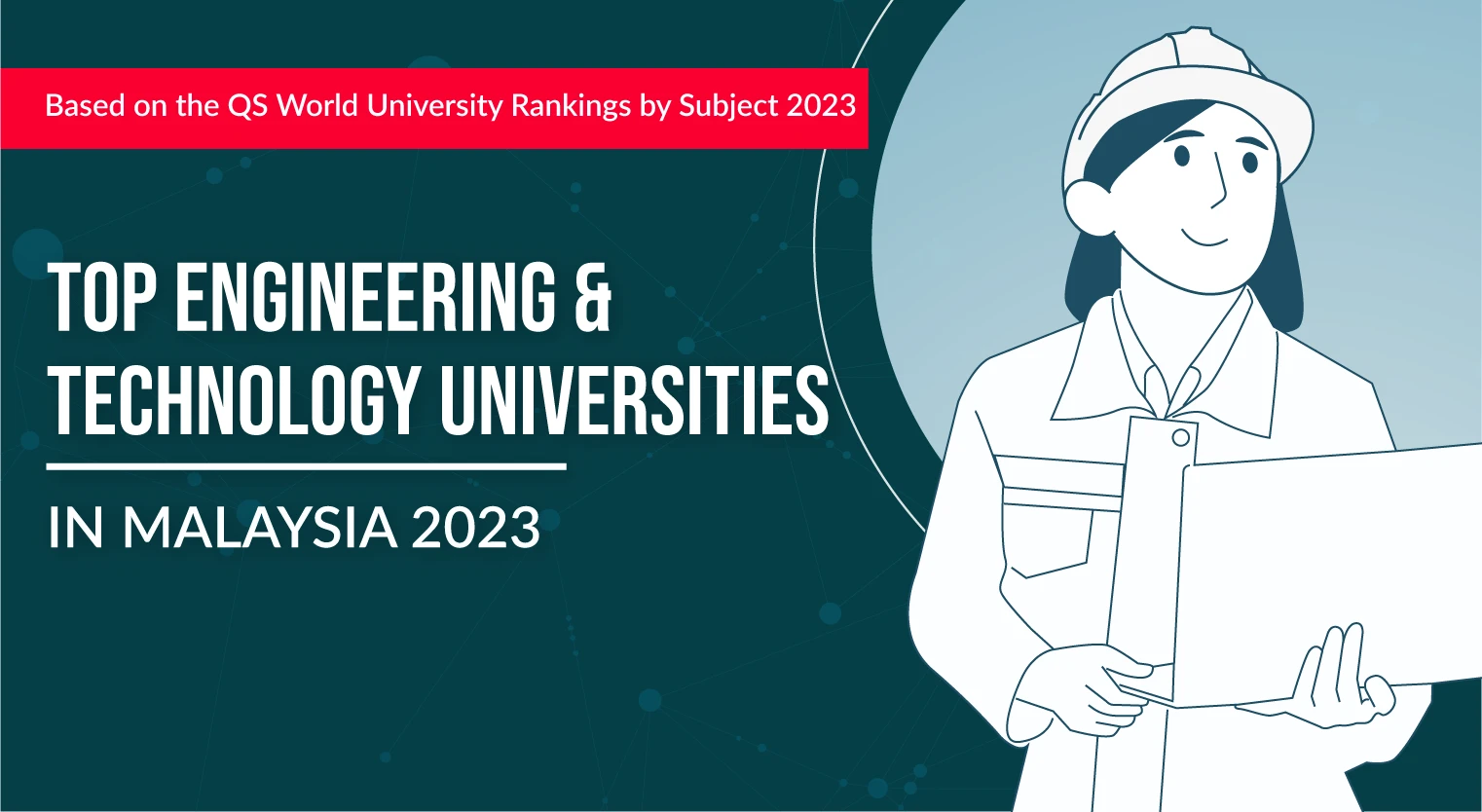How to Be a Professional Engineer in Malaysia
What is the pathway to hold the title of an engineer? Here’s a guide on how you can be a professional engineer in Malaysia from SPM.
Updated 23 May 2022

Have you always been curious and fascinated with how things work? Do you like solving puzzles and creating new inventions? Perhaps you want to put your excellent knowledge in maths and science to good use.
Well, it seems like you’re destined to be an engineer!
So, what can you do to hold the honorific titles of an engineer? We’ve prepared a step-by-step guide on how you can qualify to be a professional engineer in Malaysia from SPM.
Step #1. Meet the requirements at SPM level

To study an engineering degree, you must first meet the entry requirements set for SPM level.
If you want to pursue a Diploma in Engineering, you’ll need to have at least 3Cs at SPM including Mathematics and one Science subject, plus a pass in English.
For a Degree in Engineering, the entry requirements are higher — a minimum of 5Cs at SPM including Mathematics and two Science subjects, as well as a pass in English.
Step #2. Complete a pre-university or foundation programme

Upon completing SPM with the minimum requirements, you’ll need to take a pre-university course (e.g. A Levels, STPM, etc.) or a foundation programme. Both Foundation in Science and Foundation in Engineering are acceptable.
With this qualification together with your SPM, you can proceed to a Degree in Engineering.

Asia Pacific University of Technology & Innovation (APU)
Bachelor of Petroleum Engineering (Hons)
✓Accredited by the Board of Engineers Malaysia (BEM) and Washington Accord
Step #3. Complete a recognised 4-year Degree in Engineering

Once you complete a pre-university or foundation programme, you’ll qualify to pursue a Degree in Engineering. Engineering is a diverse field that includes many different disciplines — civil, chemical, mechanical, and electrical and electronic engineering, just to name a few. Pursuing any engineering degree will enable you to become an engineer upon graduating.
To be a registered professional engineer in Malaysia, you must pursue a recognised Degree in Engineering that is 4 years long.
If you pursue an engineering degree from Malaysia, it must be from a university that’s accredited by the Engineering Accreditation Council of the Board of Engineers Malaysia (BEM). Otherwise, the degree needs to be from an overseas university that is a signatory to the Washington Accord. This includes universities in Australia, UK, USA, Singapore and Korea.
Once you graduate, you’ll be able to enter the workforce. However, you are not a professional engineer yet as further training is required.

Step #4. Register as a Graduate Engineer and gain practical experience

Upon completing your engineering degree, you’ll need to register with BEM as a Graduate Engineer.
Subsequently, to be entitled to register as a professional engineer, you’ll need to gain 3 years of working experience as a Graduate Engineer. This must include:
- 2 years of general training for professional development
- At least 1 year of professional career development and training that exposes you to various managerial and technical expertise
At least 1 year of the above-mentioned training must be completed in Malaysia under the supervision of a Professional Engineer in the same field of engineering. This is critical so that you are familiar with local conditions and the country’s by-laws.
You’ll also need to have sufficient design and site experience, depending on your engineering discipline.
| Engineering Branch | Design Experience | Site Experience |
|---|---|---|
| Civil Engineering | 12 months | 12 months |
| Mechanical Engineering | 6 months | 12 months |
| Electrical Engineering | 12 months | 6 months |
| Electronic Engineering | 6 months | 12 months |
| Chemical Engineering | 6 months | 6 months |
| Other Branches | 6 months | 6 months |
Apply for university with EduAdvisor
Secure scholarships and more when you apply to any of our 100+ partner universities.
Start nowStep #5. Sit for professional exams

Once you’ve obtained all the necessary experience, you’ll need to sit for the Professional Assessment Exam (PAE). The PAE consists of a professional interview and a written examination that requires you to write 2 essays.
If you successfully pass the PAE, you’ll be able to register as a Professional Engineer.

Asia Pacific University of Technology & Innovation (APU)
Bachelor of Petroleum Engineering (Hons)
✓Accredited by the Board of Engineers Malaysia (BEM) and Washington Accord
Step #6. Register as a Professional Engineer

Once you have passed the PAE and meet the criteria to be a professional engineer, you can proceed to register as a Professional Engineer with BEM. At this stage, you will have the status of professional engineer and can use the abbreviation “Ir.” before your name or “P.Eng.” after your name.
To maintain this status, you’ll need to record 25 hours of Continuous Professional Development (CPD) every year to ensure that you are familiar with the latest developments in your profession. This can include formal and informal learning, attending conferences and seminars, and on-the-job training.
If you would like to open your own engineering practice, you will need to register as a Professional Engineer with Practising Certificate. To qualify for this, you must be a registered Professional Engineer in good standing and pass a Professional Competency Examination that’s conducted by BEM.
So, there you have it! We hope this has shed some light into the pathway to being a professional engineer after SPM. Although there will be challenges on the long and windy road, rest assured that these hurdles will equip you with the dedication, resilience and integrity that is required of an engineer.







